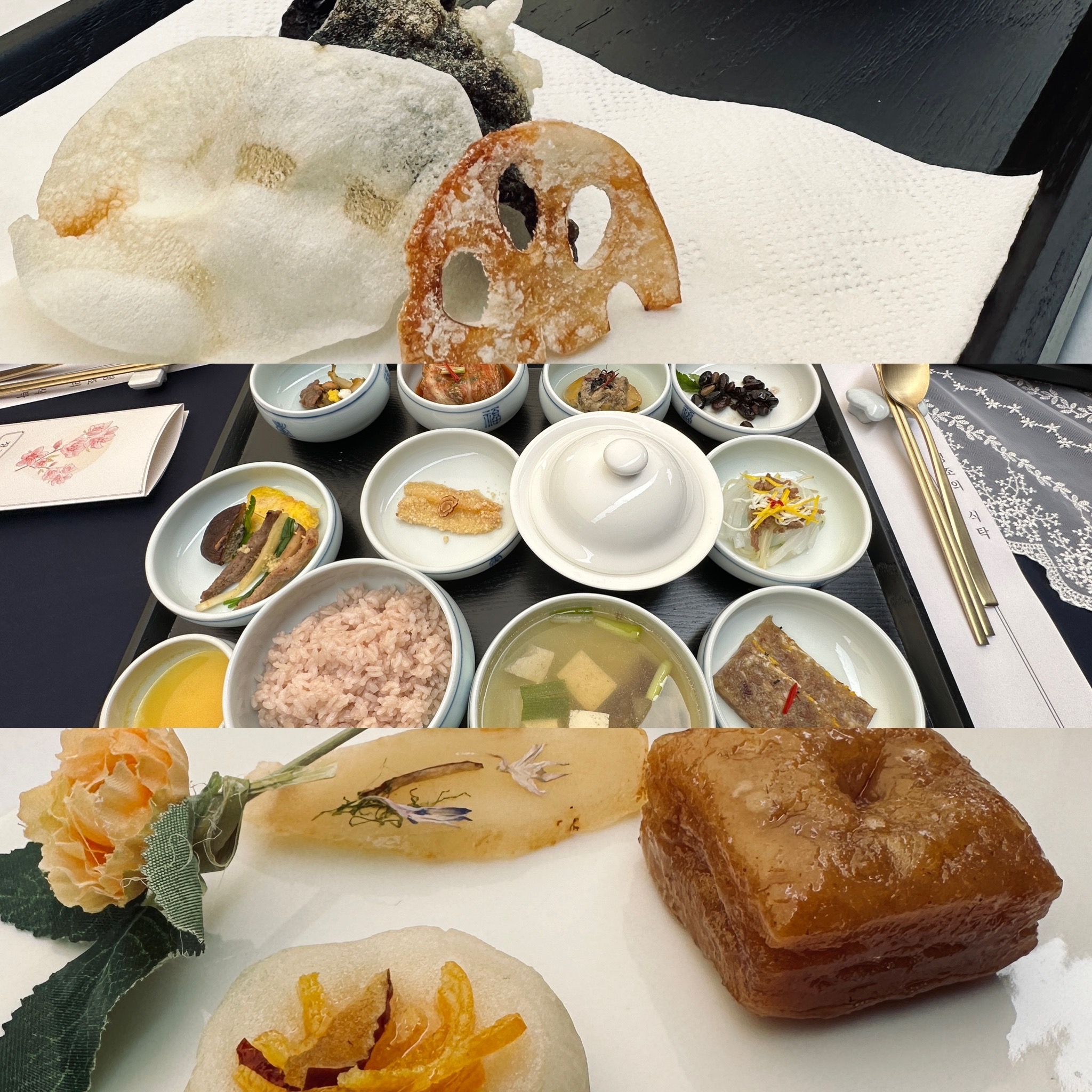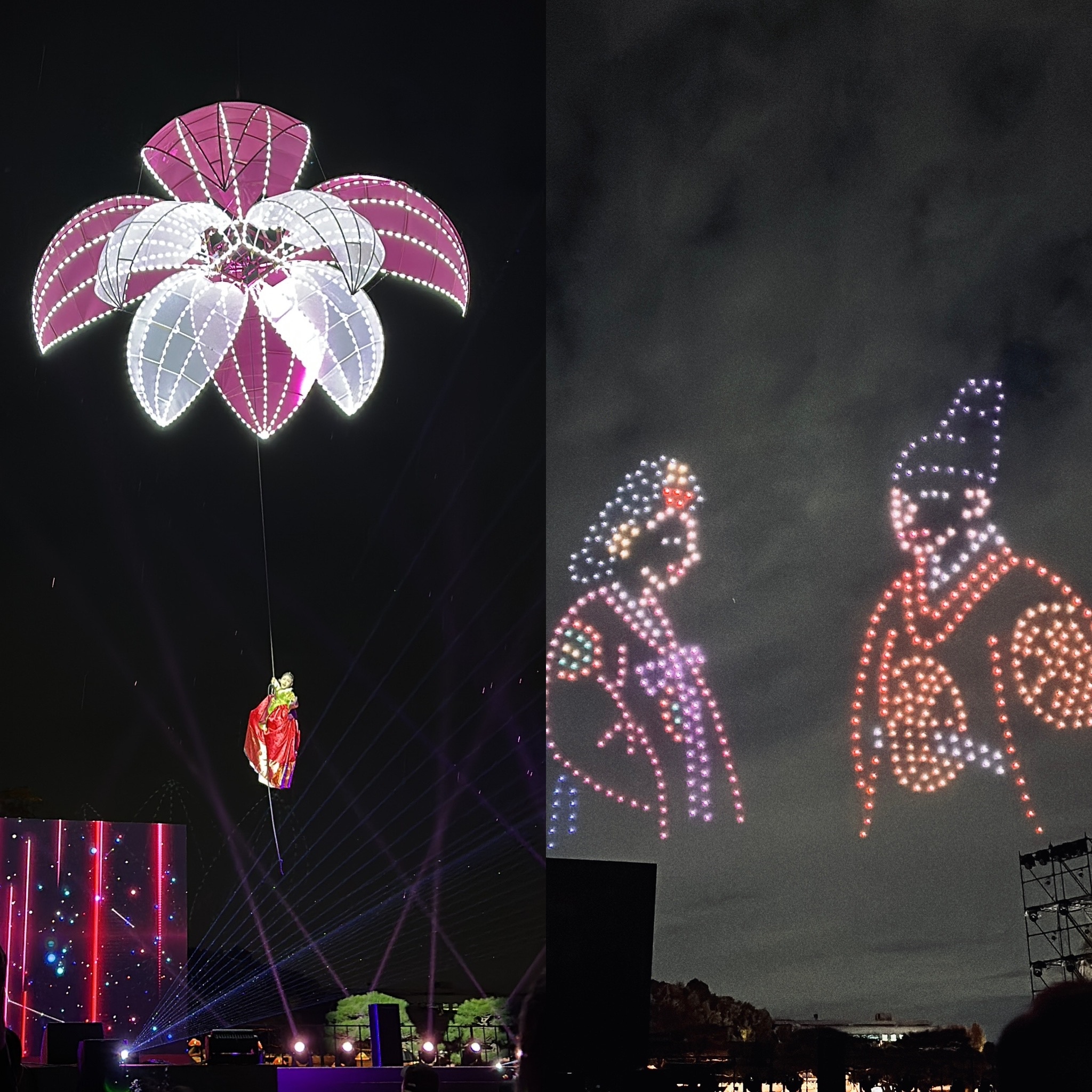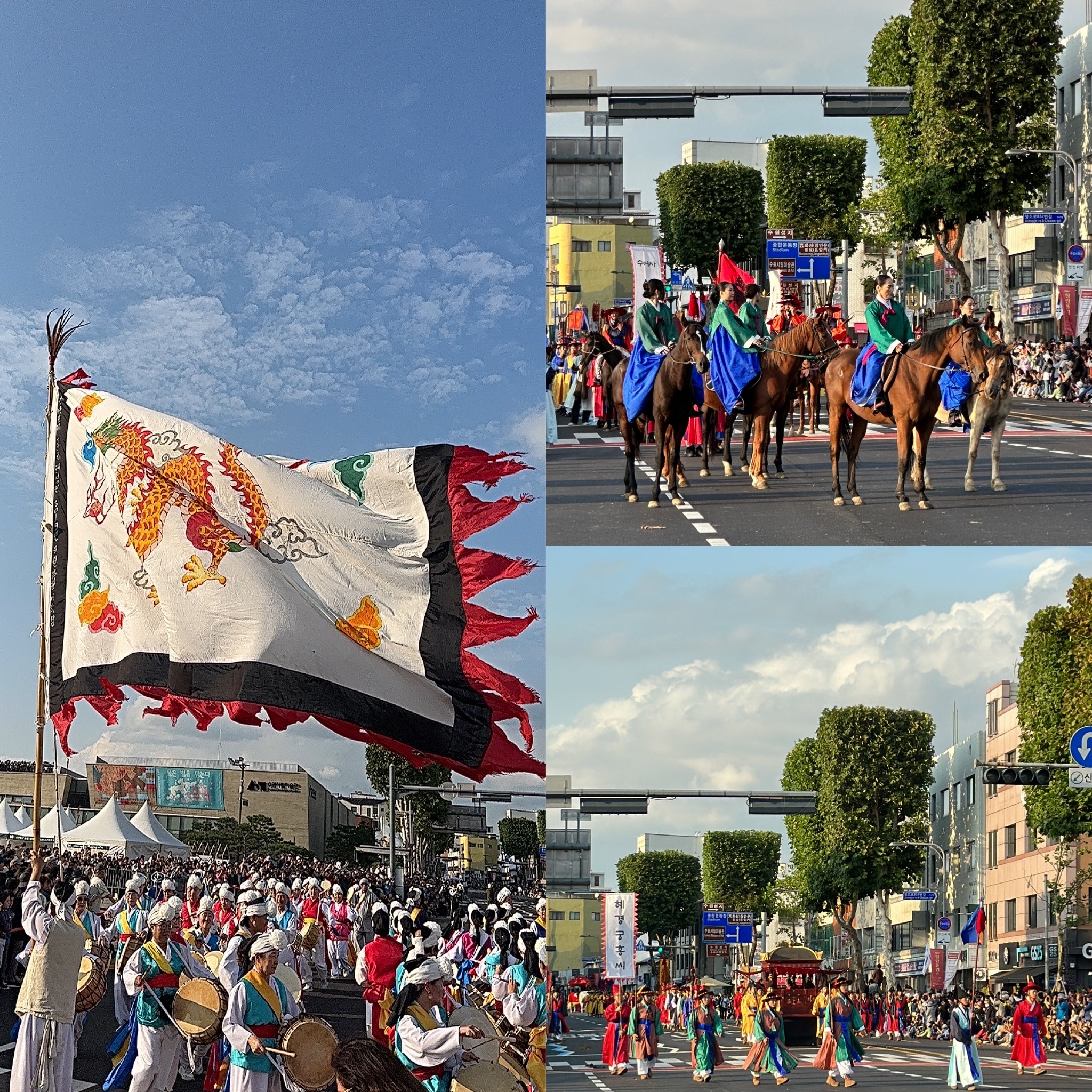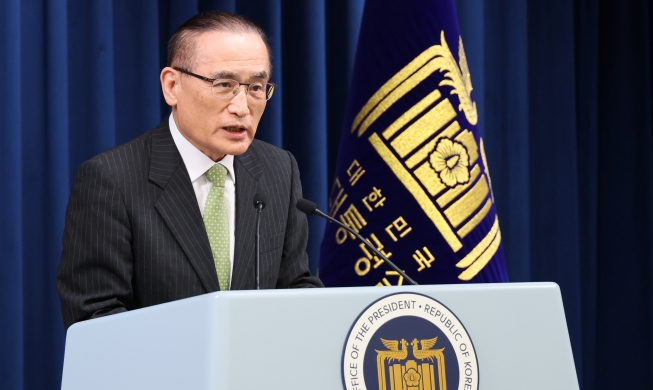- 한국어
- English
- 日本語
- 中文
- العربية
- Español
- Français
- Deutsch
- Pусский
- Tiếng Việt
- Indonesian
Photos = Koh Min Yu
In a captivating journey from Oct. 8-9 to Suwon, Gyeonggi-do Province, I attended the 60th Suwon Hwaseong Cultural Festival, a splendid showcase of the Uigwe, a generic name for a massive collection of 3,895 books recording in detail royal protocols and rituals of the Joseon Dynasty.

King Jeongjo's table is a three-course meal starting with appetizer (top), main course (middle) and dessert (bottom).
The tour began with a delectable culinary experience: King Jeongjo's table. The menu was devised thanks to meticulous research by the Institute of Korean Royal Cuisine. Historical records were scrutinized to recreate the royal gourmet that King Jeongjo and his mother, Lady Hyegyeong, savored during their visits to Suwon.
Ginseng featured prominently in the royal diet, and the king's eating habits marked by frequent but light meals reflected his deep concern for both aesthetics and health. This insight illuminated Joseon's culinary sophistication.

This is a scene from the performance "Suwon Fantasy - Jagunggagyo" at the 60th Suwon Hwaseong Cultural Festival.
A breathtaking sight by day took on an ethereal beauty at night. At Temporary Palace at Suwon Hwaseong Fortress, I saw a grand performance for the festival's 60th anniversary that brought together the Suwon Philharmonic Orchestra, choir and performing company.
A tribute to an event that marked Lady Hyegyeong's 60th birthday in 1795, the festival artfully displayed the internal upheaval King Jeongjo experienced following the execution of his father, Crown Prince Sado, by the latter's own father due to a power struggle.
The spectacular drone show that concluded the performance punctuated the festival's theme.

A reenactment of King Jeongjo's royal tomb procession marks a great finale of my trip to Suwon.
The grand finale of my Suwon journey was a reenactment of King Jeongjo's royal tomb procession per the record Wonhaeng Eulmyo Jeongri Uigwe published in 1797. The festival invites visitors to celebrate King Jeongjo's devotion to his parents and subjects.
Through the well-preserved Uigwe, people can relive the majesty of the 59-km parade. Starting at Changdeokgung Palace in Seoul, it passes through Suwon and ends at the royal tomb in Hwaseong. I saw the parade when it arrived in Suwon.
Overall, the Suwon Hwaseong Cultural Festival displayed the city's rich history and offered a unique opportunity to connect with Korea's cultural heritage and the stories of its illustrious past.
msjeon22@korea.kr
*This article is written by a Korea.net Honorary Reporter. Our group of Honorary
Reporters are from all around the world, and they share with Korea.net their love and passion for all things Korean.
